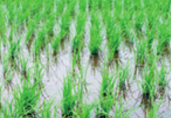Given that agriculture employs 12.7% of the population yet contributes just 3% to GDP, in what way can productivity be improved?
Articles & Analysis | Fertile ground: While challenges remain, the sector may be set to enter a new period of dynamism from The Report: Mexico 2014
For the past decade the agriculture sector has grown marginally, as the rest of the economy continues to industrialise. The slow pace of expansion has been due to a number of structural inefficiencies which limit productivity growth, in particular the prevalence of small-scale farmers, limited financing options and widespread rural poverty. In...
Chapter | Agriculture from The Report: Mexico 2014
For the past decade the agriculture sector has grown marginally – at an annual average rate of 0.9% – as the rest of the economy continues to industrialise. Its contribution to national GDP was estimated at 3% in 2013, down from 3.4% the previous year. The prevalence of small-scale farmers, limited financing options and widespread rural poverty are some of the factors behind the slow pace of...
The second-largest economy in Latin America, Mexico seems poised to enter a new growth phase as the government of Enrique Peña Nieto implements radical changes in a number of sectors across the economy. The reforms, aimed at raising the competitiveness of the Mexican economy, have the potential to establish Mexico’s position as a regional powerhouse.
Economic update | Investment to support the Philippines’ drive for rice self-sufficiency
Articles & Analysis | Food for all: Increasing self-sufficiency as a means of achieving food security from The Report: Mongolia 2014
Over the past few decades a series of major economic, demographic and environmental developments have transformed Mongolia’s food security situation. Under communism, the country was more than 80% self-sufficient in terms of overall agricultural production. In the decade after the collapse of the Soviet Union in 1991, this number dropped precipitously as a result of...



